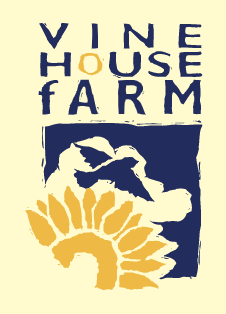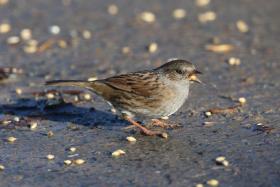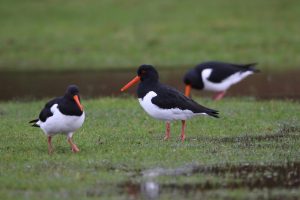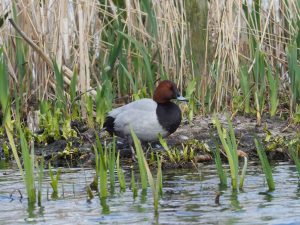
As you might expect, with all the wet weather we’ve had, we’ve been breaking weather records again. When it’s either too wet or too dry, it is not good news for farmers. This January we have had over 4ins of rain, the last time there was 4ins of rain in a January was in 1956. Coupled with the wet December, when we had nearly 5ins of rain, these have been the wettest December and January months we’ve had since the Welland and Deepings’ Drainage Board records began in 1829.
We haven’t had any flooding, as the pumps have been able to cope. It is the fields and the drains under the soil that have been problematic, some because the fields need new under-drains and others because the fields have not yet recovered from all the rain we’ve had since June 2019. Our average rainfall is less than 22ins per year, so when you get more than double your average rain two months in a row, it makes life difficult for arable farmers.
January has also been colder than usual – a mean average of 2.6°C against an average of 3.7 deg°C.

January is not a month when we plan to do anything in the fields, but occasionally there are things that didn’t get done in the autumn. Last autumn all the ploughing and drilling was done, except for one field of sugar beet which a contractor was meant to come and take up. He never came, too busy elsewhere and then it was too wet. As it continued to get wetter from the middle of December, we haven’t asked him to come. He’ll have to come by the middle of February however, or the factory will close and the only market for the beets will be for stock-feed. It is still quite a good market to feed it to cattle, but it depends how much dirt there is on the beets.
Our men have been busy loading potatoes destined for supermarkets. They go to the packing stations in boxes, which then get returned to us. Some get broken, so January is a good time for repairs.
We have also been loading wheat for animal feed, mainly for chicken food as we cannot reliably grow wheat for bread making on the Fenland. The good bread varieties yield less due to more protein, so we find that it is better growing the poorer quality, higher yielding varieties. An acre of ground can only produce a certain amount of goodness. We can grow 4 tonnes an acre of feed wheat, which typically has 10% protein but only 3.75 tonnes an acre of bread making wheats, which have typically 13% protein. At the other end of the scale, we can only grow 1 tonne per acre of Sunflowers which are 25% protein and 40% oil.
We grow quite a lot of spring barley for seed on our organic farm. To grow a crop for seed, it needs to be free of wild oats and any other seeds of a similar size. We have to be very careful that there is no wheat growing in the field, from the previous crop. If there is, it has to be pulled out by hand along with the wild oats. No doubt some of you have pulled wild oats in the past, and if it is done properly every year, there won’t be many to pull after a few years. That is the stage we are now at, it’s no longer an arduous job.
The spring barley was certified to be free of wild oats and wheat, and also passed the germination test as obviously whoever is buying it needs to know that it will grow. It was then suitable to be taken to the seed merchant to clean it, bag it and sell to other organic farmers. Cleaning the seed just means putting it over a riddle and extracting the dust, small grains and other light particles. If all the hurdles are cleared, we get paid an extra £25/tonne and it makes me be a better farmer aiming for that extra £25/tonne.


For those that don’t know why I started to feed the birds on the farm, I discovered that our farmland birds were declining from doing a breeding bird survey which started in 1982. By mid-May nearly every bird you see in the countryside will be breeding locally. There are of course exceptions, such as Wood Pigeons and Peregrines, that travel a long way from where they are nesting to look for food.
So, every year in May, armed with a map, a pen and binoculars, I cover the same ground at the same time of day, starting just after sunrise and taking approximately the same time. I note on the map all the birds I see and hear, not using my binoculars very much as nearly all my records were singing or calling birds. I have now been doing this survey for 38 years and can record a trend for how species are faring. In those first 10 years, Corn Buntings declined by 90% and Skylarks by 60%. This worried me, I didn’t know whether it was a winter problem or a summer problem.
In the winter of 1992/3 we fed the birds in our farmyards with oil seed rape and it was also the first year of set aside and we had let the regenerating stubbles near the farmyard mature. So many birds came to feed on the standing wheat of the set-aside and the oil seed rape, it was a real spectacle. We organised an open day, there was no charge but we had a collection box for the Lincolnshire Wildlife Trust and around 70 people came. A few asked if we could sell them any bird food, so we sold them oil seed rape. The next year we had the same spectacle, so another open day was organised and all the proceeds went again to Lincs Wildlife Trust. More people asked to buy some bird food, so there we were, selling bird food without even trying.
The next winter my wife, Anne and I were touring the Argentinian Pampas and she was attracted to some rogue sunflowers with several heads, growing in the soya bean fields. I was dispatched to gather some seed heads, which we bought back to grow in the Vine House Farm garden. That autumn the garden was full of birds feeding on the sunflower seeds. We saved some of the seeds to grow the next year and again the garden was full of birds feeding, so I said to my wife we should be growing and selling sunflowers instead of oil seed rape. Our first crop of sunflowers was in 1998 and we have grown them every year since.
This winter we have altered our garden feeding program. We’ve been feeding Moorhens nearer the house and have provided more ground food, such as apples which were gathered up in the autumn, for the Blackbirds. The apples ran out so we are now feeding them on cooked potatoes. Fat blocks are also available in a ground cage for the Blackbirds, Robins and Dunnocks. If they were left out in the open, Jackdaws would come down and take them away in big chunks. They’d also bring their friends which would deter the smaller birds from feeding and I have no desire to feed members of the crow family in the garden. It is quite simple, if I had a free restaurant in town I would get some people coming I wouldn’t want, so I have put a smaller door on the restaurant so only the smaller people can get in.
For the first time this winter, we have been feeding live mealworms from a dish not far from our kitchen window where we have our meals, and it has been very entertaining. At the moment, only Blackbirds and Robins are coming for them. We feed them the same amount each morning and they are all gone within half an hour. During November and December, two Robins came for the mealworms and were frequently falling out. They eventually made friends in January, but in the last few days two more Robins have arrived on the scene so there is more falling out. The antics of the Blackbirds, Robins and Moorhens have kept us entertained and very often breakfast lasts longer than it should do. There are Goldfinches, Blue, Great and Long Tailed Tits above them on the hanging feeders, but we are finding the ground feeding birds far more entertaining.



